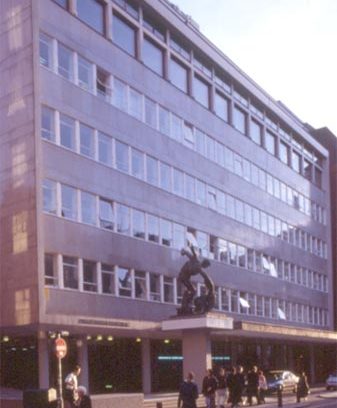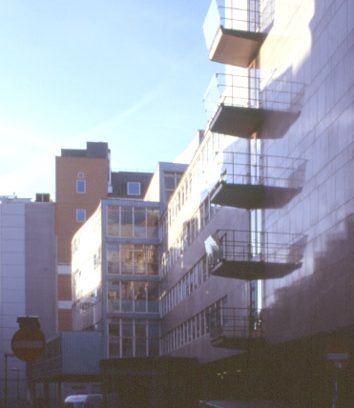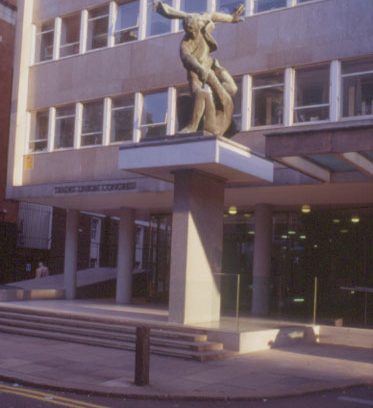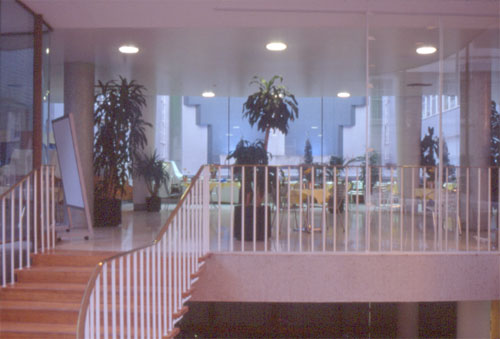This website uses cookies
This website uses cookies to enable it to function properly and to analyse how the website is used. Please click 'Close' to accept and continue using the website.






October 2002 - Congress House, London WC1
Tucked into a side street in Bloomsbury, Congress House is one of the most important British buildings of the 1950s. Like the Royal Festival Hall, it is a complete demonstration of the principles of modern architecture imbued with a strong sense of pleasure and perfectionism, qualities that often fell short during the period. There was a competition in 1948, won by Aberdeen because of his idea of putting the main assembly hall in the basement, and thus creating a large light well in the middle of the square site. As in the 1920s designs of Le Corbusier (mostly the ones for buildings that were never built), there is a genuine sense of free-flowing space on the basement and ground floors, which can be shared by people passing at street level, who can see into the courtyard, with its wall relief sculpture by Jacob Epstein. The lightness is a favourite characteristic of contemporary architecture today, and although Congress House went through a period of looking ‘dated’, it is now very much in fashion, with its intersting use of curved glass, departing from a strict grid. It was one of the first post-war buildings to be listed, in 1988, at Grade II*.
David Aberdeen (1913-1987) was not a prolific architect. His other main works are the Aircraft Assembly Buildings at Filton, Bristol, for which he was joint architect with Eric Ross, 1947-9, and the Swiss Centre in Leicester Square, 1961-8.
The Twentieth Century Society is currently concerned that continuous small changes to the interior of the building are eroding the character of the detail. Each individually may seem minor, but they are accumulating over time and are avoidable. Because the building is not open to the public in the same way as the Festival Hall, these are less likely to arouse comment or opposition.
Look for past Buildings of the Month by entering the name of an individual building or architect or browsing the drop down list.

Become a C20 member today and help save our modern design heritage.